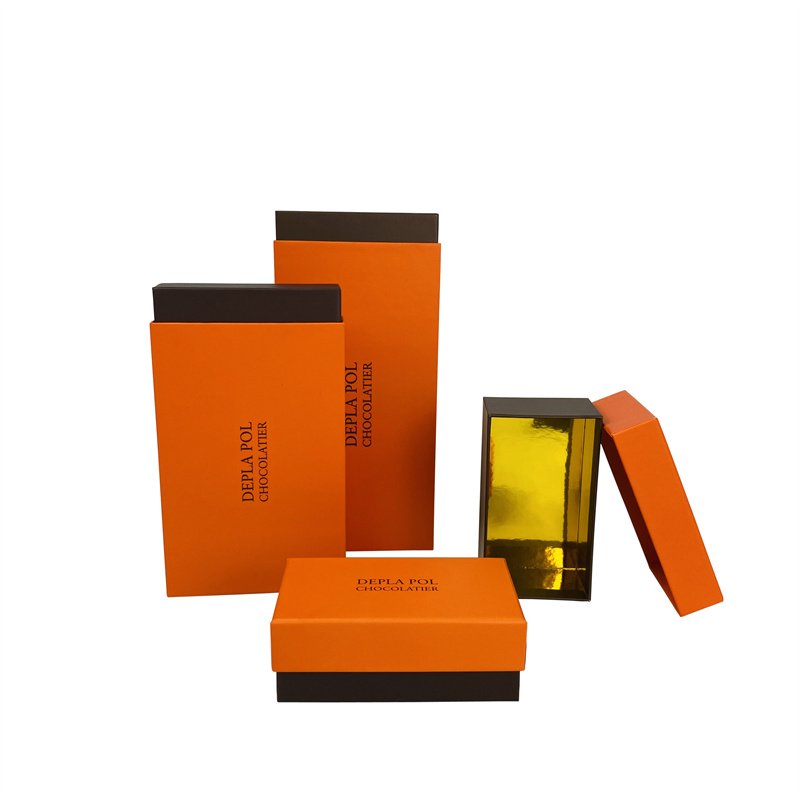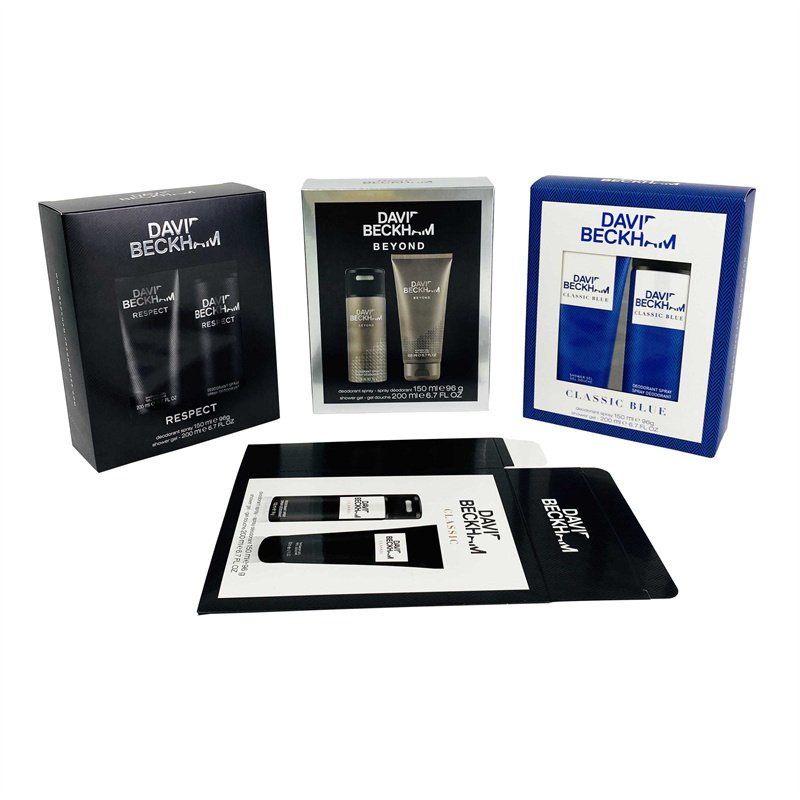Custom Paper Packaging Manufacturer in China
Custom Boxes and Packaging for differerent Industries
Elevating Brands with Exquisite Packaging Solution
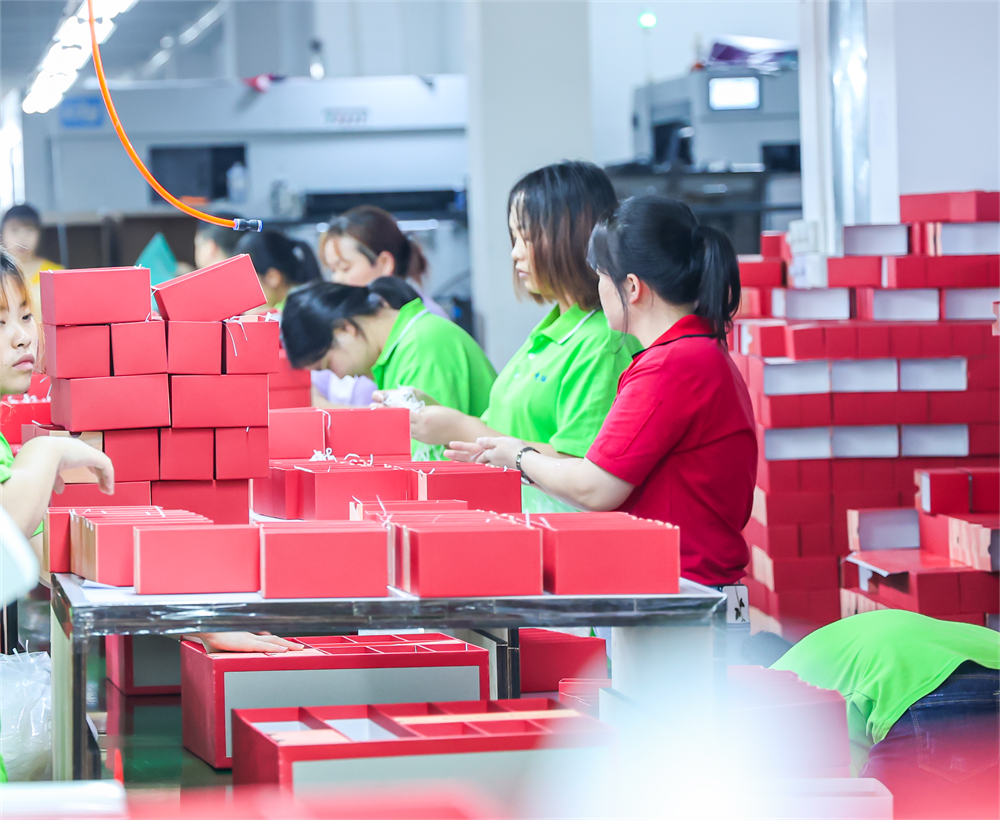
20 Years Serving
Europen and American Market
Partner with Luxury Brands
Hundreds of Classic Cases for reference
Lower MOQ, More Flexibility
Get Factory Price Start From 500PCS
Certification
ISO9001, ISO14001, SEDEX, FSC
What We Produce
Exceptional Custom Boxes and Packaging. Located in China, we merge our deep-rooted craftsmanship with advanced technology to create packaging solutions that are both stylish and durable.
About Us
Welcome to Xiamen Chief Color Co., Ltd, a luxury paper packaging manufacturer in China. The past 20 years witness us growing from a small workshop into a modern enterprise equipped with advanced machinery and staffed by skilled professionals.
20 Years Experience in manufacturing and exporting
108 Workers, Monthly capacity- 700K rigid box, 1400K prestigage paper bags
Certification:
ISO9001, ISO14001, SEDEX, FSC and invent patents
Top Manufacturing Equipments, full aotumatic production lines

Why Choose Us
As a top custom packaging manufacturer in China, we continually innovate to stay ahead of global trends and meet customer expectations. Each box we create reflects our dedication and commitment to delivering the highest quality custom boxes and packaging.

Self-owned Heidelberg Printer
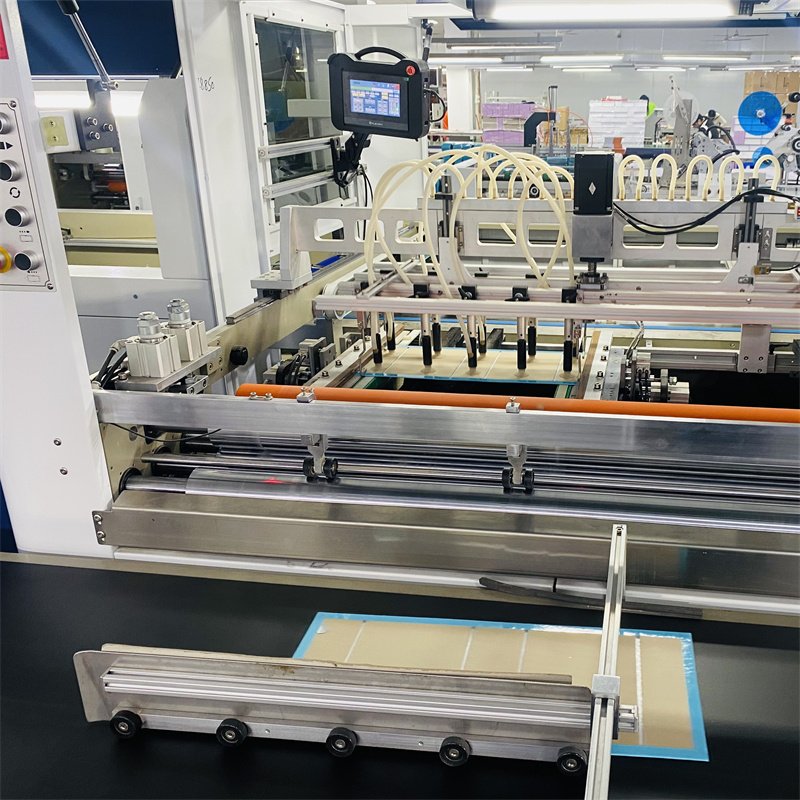
Highly Efficient Equipment for Rigid Box Manufacturing

Coalition of well trained manual workers and advanced machine

Your one-stop supplier of paper packaging solutions

Free White Sample Developing
Custom Packaging Solutions for Various Industries
As a top gift box factory and rigid box manufacturer in China, we specialize in creating bespoke packaging that elevates your products’ value. Our commitment to producing premium custom boxes and packaging caters to a diverse need of industries worldwide.

Chocolate and Bakery Packaging

Cosmetic and Skincare Packaging

Candle and Diffuser Packaging
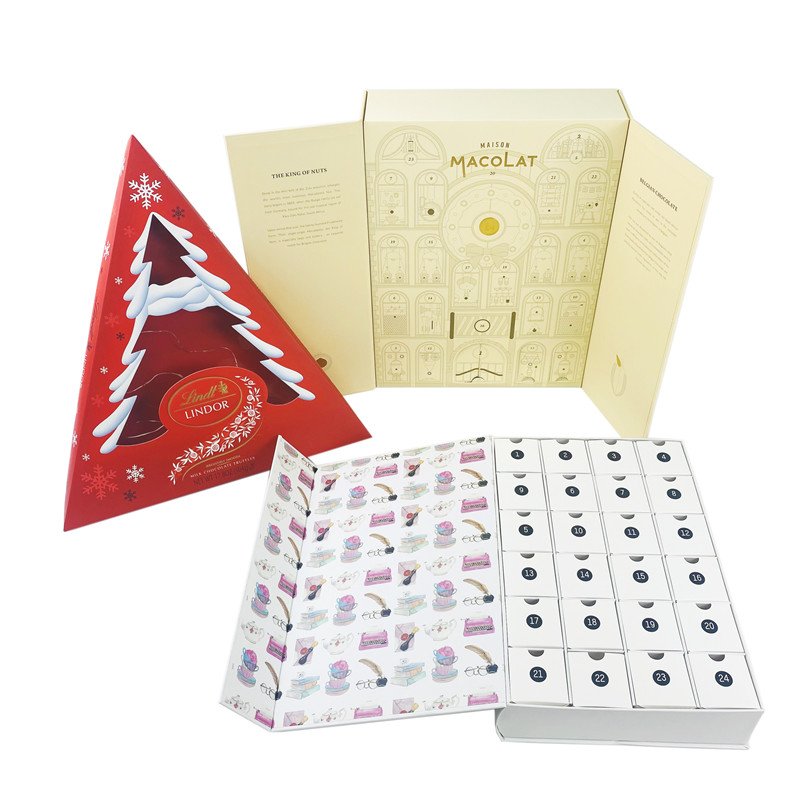
Advent Caldendar Packaging

Wine Packaging

Jewellery Packaging

Flower and Gift Packaging

E-commerce Packaging
We are here at your disposal for any technical or commercial information
Creating Custom Boxes and Packaging
Take a visual tour of Chief Color’s advanced production line for luxury gift boxes. As a professional gift box manufacturer in China, we are proud of our meticulous craftsmanship and attention to detail. Our videos below reveal the artistry behind our branded paper packaging, from material preparation to final assembling and packing line.
Playlist
Customize Your Packaging Now!
Gift Box China – Reflecting Your Brand’s Essence
From paper shopping bags to custom gift boxes, our range is designed to meet the diverse needs of various industries. Our specialization in custom boxes and packaging allows us to tailor every detail to your specific needs, ensuring a perfect match for your products.
FAQ
If you are new to custom product packaging, please be patient and read below FAQ for a clear understanding of our services and the value we can add to your packaging needs. While every customer have different requirement for customized boxes and bags for products, we are all ears for your questions, consults and inquiries.
We specialize in producing high-end custom paper packaging products, including custom gift boxes, paper shopping bags, and cartons. Our products are tailored to meet the diverse needs of our clients, whether for retail packaging, promotional events, or special occasions.
To get a quote for your custom packaging, simply follow these steps:
- Step 1: Provide us with your packaging requirements, including the product details, preferred materials, design specifications, and quantity.
- Step 2: If you have any reference images or examples, feel free to share them.
- Step 3: Our team will review the information and send you a detailed quote based on your needs.
You can submit your request through our contact form on the website, by email to info@chiefcolor.com, or by phone +86 592-5691077. We’re happy to assist you every step of the way.
We provide a variety of printing options such as offset, silk-screen, and digital printing to achieve superior quality and branding consistency. Options include embossing, foil stamping, and UV coating to enhance the custom business packaging’s visual appeal and tactile quality.
Quality assurance is one of the most important part to our process. We conduct rigorous quality checks at multiple stages of production to ensure every custom packaging box and bag meets our high standards. Additionally, our production processes are ISO certified, reflecting our commitment to quality and consistency.
We offer eco-friendly packaging solutions, including recycled materials and biodegradable options. Our team is committed to providing sustainable choices without compromising on quality, helping brands stay aligned with their environmental values.
Our minimum order quantity depends on the specific product and customization details. Typically, it starts at 1000 pieces for more customized orders. This quantity ensures cost-effectiveness while allowing for high-quality production standards.
Once custom design specifications are finalized, it regularly takes about 7-10 days to produce and ship a sample. This time frame allows us to ensure that every detail meets your expectations before proceeding with the full order.
Production lead times vary based on order size and customization details, generally ranging from 15 to 30 days. Delivery times depend on the destination country but are typically between 6 to 8 weeks from China to Europe. Expedited options are available upon request.
We manage all aspects of shipping and logistics to ensure a smooth delivery process. Our logistics team works with reliable carriers to offer cost-effective and timely shipping solutions across major developed countries in Europe and the U.S.. We can also recommend you the forwarders that we used if you want to figure out the shipping cost by yourself while you don’t have any forwarder contact. As it is believed that it is more benefit for buyer to get shipping cost.
We provide comprehensive support to all clients, especially those new to custom packaging. Our team guides you through every step, from design selection and material choice to final production, ensuring a seamless experience and a product that perfectly suits your needs.
Blog

How Post-Consumer Waste (PCW) Packaging Benefits Your Business and the Environment
As someone with years of experience in paper packaging, I’ve always looked for ways to make packaging more sustainable without compromising on quality. One of

Mooncake packaging plays an important role on mid-autumn festival
The Mid-Autumn Festival, celebrated in many East Asian cultures, is a time of family reunions, moon-gazing, and enjoying traditional delicacies, with mooncakes being one of

Are Paper Boxes Microwave Safe?
As one of the experienced packaging consultant from Chiefcolor, a leading manufacturer of custom printed paper boxes and bags, I’ve often encountered the question: Are paper boxes microwavable?
Table of Contents
Your Ultimate Guide to Acquiring Custom Boxes and Packaging
Welcome to your definitive resource for all things custom boxes and packaging! At Xiamen Chief Color Co.,Ltd, we specialize in manufacturing custom printed, branded paper packaging that elevates your products and enhances your brand image. Located in the heart of China, our factory is dedicated to producing luxury gift boxes and paper shopping bags tailored to meet the diverse needs of industries worldwide.
Explore our comprehensive guide to discover how custom boxes and packaging can transform your product presentation and drive business success. Let us help you create packaging that not only protects but also promotes your products, making them stand out in a competitive market.
Experience why businesses worldwide trust Xiamen Chief Color for their packaging needs. Discover how our high-quality, custom packaging can make a real difference for your brand.
Chapter 1
Customized Paper Bags: A Complete Guide to Quality and Flexibility

How to Customize the Ideal Paper Bag for Your Needs
Selecting the perfect paper bag involves understanding various aspects of its production, design, and functionality. A carefully crafted bag can enhance your product presentation while supporting your sustainability goals. Below is a comprehensive guide to help you make the right choice:
1. The Paper Bag Manufacturing Process
A high-quality paper bag begins with a well-controlled manufacturing process. Reputable manufacturers use advanced equipment and sustainable materials to ensure the bags maintain consistent strength, durability, and aesthetic appeal. While some larger bags, particularly premium ones, may involve more manual assembly, this adds a personal touch and ensures craftsmanship.
2. Choosing the Right Material
The material of the paper bag plays a critical role in its durability, environmental impact, and suitability for specific purposes. Popular options include:
Kraft Paper: Known for its strength and rustic look, ideal for eco-conscious brands.
Recycled Paper: A sustainable choice that reduces environmental impact without compromising on strength.
Laminated Paper: Offers a premium finish and greater durability, often used for high-end products.
3. Customizing Size and Style
Paper bags are highly customizable. When selecting the size and style, consider the purpose of the bag and the items it will carry. Options include: 
Standard Paper Bags with Handles: Ideal for everyday use, retail packaging, or takeout bags.
Laminated Paper Bags: Suitable for luxury items or high-end retail, offering a polished, professional appearance.
Paper Carrier Bags: Great for groceries, books, or other heavier products, often with additional reinforcements to support weight.
4. Printing and Branding
Custom printing transforms a simple paper bag into a powerful branding tool. High-quality printing techniques, such as offset or flexographic printing, ensure your logo, design, or messaging stands out. When possible, choose eco-friendly inks for a greener impact. This enhances your brand identity and communicates your company’s values.
5. Durability and Load-Bearing Capacity
The strength of your paper bag is crucial to its functionality. To improve durability and load-bearing capacity, consider:
- Reinforced Handles: Ensure the bag is comfortable and sturdy for customers to carry.
- Gusseted Sides: Allow the bag to expand and fit larger or bulkier items.
- Multi-Layer Construction: For additional support, especially in bags intended to carry heavier products.
6. Sustainability in Paper Bag Manufacturing
As sustainability becomes increasingly important, eco-friendly paper bags are a top choice for businesses aiming to reduce their environmental footprint. Look for bags made from:
- Biodegradable Materials: Easily break down without harming the environment.
- Recyclable Paper: Can be reused and repurposed, contributing to a circular economy.
If you’re interested in Post-Consumer Waste (PCW) materials, please check our article for more detailed information on the benefits and options available. Click and check “How PCW Packaging Benefits Your Business And The Environment“

7. Balancing Cost and Quality
While budget is always a consideration, it’s essential to balance cost with quality and durability. A well-crafted paper bag may come at a slightly higher price, but its long-term performance can provide better value. This is especially important for luxury or high-end packaging, where the appearance and durability of the bag directly affect your brand’s image.
8. Finding a Reliable Paper Bag Manufacturer
Partnering with an experienced paper bag manufacturer ensures consistent quality and access to a range of customization options tailored to your specific needs. Look for manufacturers with a track record of delivering high-quality products on time, and who are experts in optimizing the design and production process to meet your business goals.
By focusing on these key factors, you can select paper shopping bags that are not only functional and stylish but also align with your environmental and brand objectives. Reach out to us today to explore our range of paper bag solutions and discover how we can support your packaging needs effectively.
Every Bag Tells a Story – Let Yours Be Memorable!
Chapter 2
Full Specifications and Customization Options for Paper Carrier Bags
When it comes to creating the perfect paper shopping bag, the specifications matter. From the choice of paper material to the finishing touches like handles and printing, every detail plays a role in both the bag’s functionality and its ability to represent your brand. Below, we outline the key specifications that can be customized to suit your needs, ensuring you get the ideal paper carrier bag for your products.
Full Specification of a custom paper carrier bag:
| Material Types | White Kraft paper Natural Kraft paper Coated paper (C1S) Art paper (C2S) Dyed paper Corrugated paper |
| Grammage (GSM) | Lightweight: 60-80 GSM (for small bags) Medium: 100-150 GSM (for moderate loads) Heavy-duty: 200-300 GSM (for heavy or bulky items) |
| Size and Dimensions | Customized to fit products (e.g., 10×15 cm, 20×30 cm, etc.) Dimensions include: Height x Width x Gusset (side or bottom fold for expansion) |
| Carrying Capacity | Weight-bearing capacity ranges from 1 kg to 25 kg. Reinforcement features (e.g., thicker handles, extra layers of reinforcement cards) can increase capacity. |
| Handles Types | Flat paper handles Twisted paper handles Die-cut handles Rope or string handles Material: Paper, Cotton, PP, Nylon or synthetic fiber. |
| Printing and Branding | Printing techniques: Flexographic Offset Digital Number of colors supported (e.g., CMYK, Pantone) Eco-friendly inks (water-based or soy-based) |
| Lamination and Coating | Glossy lamination Matte lamination PE coating (for moisture resistance) Uncoated for eco-friendliness. |
| Special Features | Tear resistance (reinforced paper or added fibers). Water resistance (waxed or coated layers). Ventilation holes (e.g., for food or produce bags). Food-grade certifications for direct food contact. |
| Environmental Compliance | Biodegradable: Decomposes naturally. Recyclable: Made from and suitable for recycling. Certifications: FSC (Forest Stewardship Council) ISO standards for environmental safety. |
| Additional Features | Window cutouts (plastic-free film or open). Foldable design for easy storage. String or ribbon closures for luxury bags. |



Chapter 3
How Are Rigid Boxes Manufactured?
Every custom box and packaging is a display of art and wit, carefully designed to not only protect but also showcase your product in the best light. As one of the leading rigid boxes suppliers, we pride ourselves on our careful-planned manufacturing process, ensuring every box meets the highest standards of craftsmanship. In this chapter, we’ll walk you through the step-by-step procedure of how rigid boxes are made, from design to production, highlighting the expertise and precision involved. Whether you’re a retailer, brand, or print and packaging company, understanding the creation of custom rigid boxes is key to appreciating the value and durability they bring to your products.
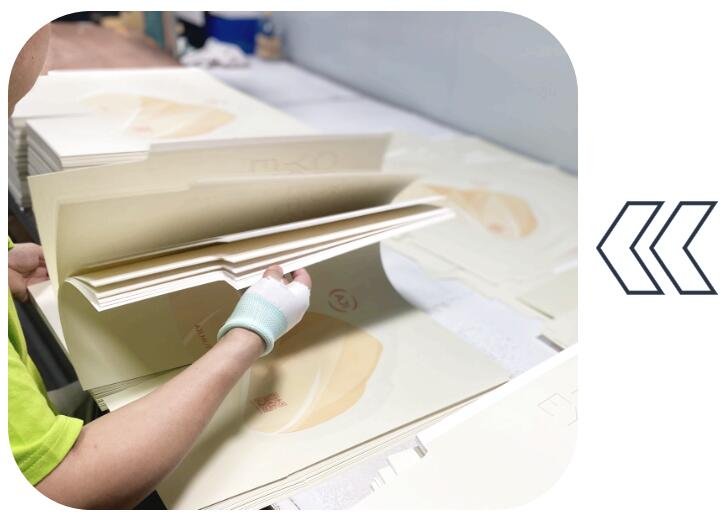
Our Custom Wrapping Paper Preparing Process
Printing
Print designs or patterns onto the wrapping paper.Finishing
Apply surface treatments like glossy, matt lamination, embossing and debossing, hot foil stamping, or Spot UV.Die-cut
Die-cut the paper to shape it into the required size.IPQC – In-Process Quality Check
IPQC is a non-negotiable requirement between every 2 processes.
Our Rigid Cardboard Preparing Process:
Cutting and Shaping
Cut the greyboard into the required size and shape with precision.V-groove and Die-cutting
Use a die-cutting machine to shape the greyboard.
Cut U-grooves or V-grooves into the greyboard for cleaner and more precise folding edges as per design requirements.Applying Magnets and Fitments
Attach magnets and iron plates to the pre-cut greyboard for magnetic box styles.
Apply PVC films and ribbons before wrapping the liner material.

Laminating the custom wraps onto the rigid cardboard

Forming ➡️ Wrapping ➡️ Assembling

Chapter 4
6 Essential Rigid Box Styles to Elevate Your Custom Packaging
When it comes to custom boxes and packaging, rigid boxes stand out as the ultimate choice for premium products. Known for their durability, elegance, and versatility, rigid boxes offer unparalleled support and visual appeal, making them a staple in luxury box packaging. Whether you’re showcasing high-end goods or aiming to elevate your brand’s packaging and labeling, choosing the right rigid box style is key.
Below, we explore six popular rigid box styles, each designed to cater to specific needs while enhancing the unboxing experience. From timeless classics to innovative constructions, these box types prove that functionality and aesthetics can go hand in hand.
1. Base and Lid / Lift-Off Lid Box Style
The base and lid or lift-off lid box style is a timeless packaging solution offering easy access and secure protection. The separate lid allows for a sleek, elegant opening experience, while the rigid construction provides durability to safeguard products.
Popular Usage: Often used in custom boxes and packaging for luxury items such as jewelry, high-end cosmetics, and gift sets like chocolate and candy packaging. This style is perfect for retail and promotional packaging that requires a high-quality presentation and robust protection during shipping.


2. Hinged Lid Box
A hinged lid box is both functional and stylish, featuring a connected lid that opens like a book. The hinge mechanism allows for repeated use and easy access to the product, providing a premium unboxing experience. It is sturdy and compact, ensuring the product stays protected.
Popular Usage: Commonly used for custom packaging of watches, electronics, and luxury gifts. This design is ideal for items that require secure, long-term storage and frequent handling, while still maintaining a high-end look.
The slide drawer box is known for its unique pull-out design, offering a sleek, interactive experience. The smooth sliding mechanism ensures easy opening and closing, while the rigid structure provides excellent product protection. The drawer style adds an element of surprise and luxury.
Popular Usage: Ideal for luxury packaging, including perfume sets, cosmetics, underware, socks and gift boxes. It’s also widely used for subscription boxes, collectibles, and other high-end retail items where presentation is key.


4. Tube Box / Cylinder Packaging Box
The tube box offers a unique cylindrical shape, perfect for products that need a snug fit, like bottles, cosmetics, or candles. The durable, rigid structure ensures the items inside are well-protected, while the eye-catching design makes it stand out on shelves or in-store displays.
Popular Usage: Tube boxes are commonly used for premium packaging of wine bottles, liquor, beauty products, and gift items. They’re an ideal choice for custom boxes and packaging when looking to create a distinctive, modern, and premium feel.
5. Wardrobe Style Box / Advent Calendar Boxes
The wardrobe-style box is a versatile packaging solution designed with a fold-out structure that mimics the functionality of a wardrobe. Its spacious interior makes it ideal for housing multiple compartments, making it perfect for products requiring organization or a sense of discovery. Often associated with advent calendar boxes. Sturdy and durable, it ensures protection during shipping and enhances the unboxing experience.
Popular Usage: This box style is frequently used in luxury box packaging for items like chocolates, cosmetics, and premium advent calendar sets, where multiple smaller products are beautifully arranged. It’s also a favorite for showcasing high-end gifts, promotional items, or specialty products that demand both elegance and functional appeal.


6. Foldable Rigid Boxes
The flat-packed folding gift box is a highly practical and space-saving solution. This style is designed to be easily assembled by the end user, and it can be flat-packed during shipping, reducing storage and transportation costs. Its sturdy construction ensures that it provides reliable protection for the product, even in its folded form.
Popular Usage: This style is often used for retail packaging, e-commerce packaging, and promotional packaging. It’s a popular choice for brands looking to balance cost-effectiveness and customization, particularly for products like apparel, consumer electronics, and gift sets. The foldable design allows for efficient packing and minimal storage space, making it a great choice for businesses that require high-volume packaging solutions.
Customization Options
All of our rigid box styles are based on these standard designs, but we can adjust and modify them to suit your unique needs. Whether you’re looking for a heart-shaped, octagonal, hexagonal, or triangular box, we offer the flexibility to create packaging that matches your vision. Each box is carefully customized according to your product’s specific requirements, ensuring a perfect fit.
Additionally, we provide a range of accesaries for products inside the custom boxes and packaging. The accessaries are including but not limited to Rigid Compartment, Carton Separator, Corrugated Insert, Satin Inlay, PE Foam Fitment, EVA Insert, PET Vacuum Tray, Flocked Foam Insert etc.. They are custom designed to securely hold and protect your product. These components not only enhance the overall presentation but also offer added protection during transit. The materials for these accessories, as shown in the attached images, are selected to ensure both functionality and aesthetic appeal, giving your packaging a refined and professional look.

Chapter 5
Top 4 Foldable Rigid Box Styles for Luxury Brands | Durable & Eco-Friendly
As we discussed the Functionality & Practicality about the flat packed rigid box above, the main function is save space while also keep the premium looking after it is set-up. We are proud to tell you that we can make any size of box to be collapsible. Let us show you the essential styles of foldable rigid boxes which we can developed versatile construction by multiple elements.
1. Folding box with 4 corners adhesive tape.
This typical foldable rigid box features pre-glued tabs at all four corners, enabling quick assembly without tools – simply fold and press for instant rigidity. Perfect for e-commerce, luxury gifts, or subscription boxes, its versatile structure adapts to creative designs like triangle/round shape of flap, or layered gift sets.


2. Side Folding Rigid Box
This innovative side-folding design is engineered to prevent panel overlap when packaging taller items (where height exceeds half the box length). The precision-engineered side seams feature reinforced glue flaps for easy one-step assembly, making it ideal for luxury candles, bottle gifts, or vertical product displays.
Key Advantages:
• Eliminates bulk from traditional folding methods
• Ships 40% flatter than conventional rigid boxes
• Maintains premium unboxing experience
• Supports weights up to 5kg when assembled
Perfect for wine brands, skincare sets, and other height-sensitive products needing both protection and elegant presentation.
3. Rigid lid plus foldable base.
This innovative packaging solution combines the luxury of a rigid lid with the practicality of a foldable base, offering the best of both worlds. The sturdy lid maintains a premium unboxing experience, while the collapsible base ships flat to reduce storage space and shipping costs by up to 60%. Simply unfold and secure the pre-scored base panels upon arrival—no tools required. Perfect for cosmetics, electronics, and gourmet gifts, this design delivers high-end presentation with eco-friendly efficiency.


4. 7-Panel Folding Gift Box with Internal Friction Flap.
This premium folding gift box features a 7-panel construction, including 1-2 internal friction-fit panels for enhanced product security. The thumb-cut or ribbon puller design allows for easy deconstruction while maintaining a sleek, high-end appearance. Perfect for luxury packaging, this versatile box combines secure product display with convenient user experience.
Sustainable Innovations in Foldable Rigid Boxes: Eco-Friendly Upgrades
With more than 20 years’ production experience, we are committed to reducing environmental impact while maintaining premium packaging quality. That’s why our foldable rigid boxes now feature eco-conscious improvements to align with global sustainability trends:
- Card-Tuck Closure replaces traditional magnetic closures, eliminating metal components and ensuring 100% recyclability.
- Paper-Woven Ribbon and Puller take the place of PP or cotton tape, offering a sturdy yet biodegradable alternative made from FSC-certified paper.
- Water-Based Coatings & Soy Inks are used for printing, reducing VOC emissions without compromising vibrancy.
- Recycled Paperboard forms the core structure, maintaining rigidity while minimizing virgin material use.
These upgrades ensure your packaging is not only luxurious and functional but also planet-friendly — meeting both consumer expectations and regulatory standards. Let’s create packaging that protects your products and the environment!
Why It Matters
- Reduces waste: Fully recyclable and plastic-free.
- Meets ESG goals: Aligns with corporate sustainability commitments.
- Consumer appeal: 73% of buyers prefer eco-friendly packaging (Source: Nielsen).
Upgrade your packaging today—responsibly!


Chapter 6
Discover Our Ready-to-Ship Foldable Rigid Boxes – Fast, Customizable, and Premium!
In today’s fast-paced market, we understand the need for quick and efficient packaging solutions. That’s why we’ve developed a range of ready-to-ship magnetic foldable rigid boxes designed to meet your urgent needs without compromising on quality or style. With 9 versatile designs and multiple size options, our inventory boxes are perfect for brands looking to elevate their packaging with minimal lead time.
Unlike traditional custom packaging that can take up to 30 days, our developed wholesale foldable rigid boxes can be customized with your logo hotfoil stamping and ready to ship in just 7-10 days. Simply choose from our 9 pre-designed styles, each available in various dimensions, and let us handle the rest.
Explore our ready-to-ship collection today and enjoy the perfect blend of speed, quality, and customization. Let us help you make a lasting impression with packaging that’s as unique as your brand!
- 9 Pre-designed styles with multiple size options. More will be developed.
- 7-10 Days turnaround for logo customization. Hotfoil stamping, embossing etc.
- Space-saving and easy to assemble.
- Durable and elegant – perfect for luxury packaging.
- Ideal for urgent needs without compromising quality.
Style #1 Collapsible Gift Box

| Collapsible Gift Box Style #1 | Packing Detail | |||||||
| Outer Size | Inner size cm | Colors available | Carton Measurement | KG/CTN | ||||
| S | L20xW18xH8cm | 18.5*17*7.5 | Red, Natural Kraft,White, Black | L37xW24xH19cm/20pcs | 6 | |||
| M | L28xW20xH9cm | 26.3*19.3*8.5 | L41xW32xH19cm/20pcs | 7.5 | ||||
| L | L33xW25xH12cm | 31.5*24.3*11.5 | L41xW32xH19cm/20pcs | 11.5 | ||||
| S | L20xW18xH8cm | 18.5*17*7.5 | Rose Gold | L37xW24xH19cm/20pcs | 6 | |||
| M | L28xW20xH9cm | 26.3*19.3*8.5 | L41xW32xH19cm/20pcs | 7.5 | ||||
| L | L33xW25xH12cm | 31.5*24.3*11.5 | L41xW32xH19cm/20pcs | 11.5 | ||||

Chapter 7
High-Quality Paper Materials Suggestion for Custom Packaging
When creating custom packaging, the choice of paper material is one of the most important factors in conveying the quality and luxury of the product. Renowned paper brands such as Fedrigoni, Gruppo Cordenons, Favini, Colorplan, and Winter’s Company are popular choices for luxury and high-end packaging solutions due to their premium quality, unique textures, and range of colors. These brands are trusted by designers and packaging professionals to enhance product presentation and elevate brand image.
- Fedrigoni
A prestigious Italian brand, Fedrigoni is known for its high-quality paper that offers excellent printability and a luxurious finish. Their papers are often chosen for premium packaging, such as high-end cosmetics, luxury goods, and exclusive gift boxes. Fedrigoni’s extensive range includes unique finishes like textured, metallic, and natural paper, giving brands the opportunity to create distinctive, memorable packaging. - Gruppo Cordenons
Another Italian leader in the paper industry, Gruppo Cordenons specializes in fine papers used for premium packaging. They offer a broad selection of colors and textures, including their signature “Wild”collection, which features eco-friendly papers with a natural, handmade feel. Their papers are ideal for creating bespoke packaging that makes a statement in both design and environmental consciousness. - Favini
Favini is known for its eco-friendly and innovative paper solutions. Their papers are made using sustainable practices, and they offer unique materials such as “Shiro Alga Carta”—a paper made from algae waste—and “FSC-certified”papers. Favini’s commitment to sustainability makes it a great choice for brands that prioritize environmental responsibility while still wanting to achieve luxury packaging. - Colorplan
Produced by the UK-based G.F. Smith, Colorplan is a high-end, colored paper known for its rich texture and vibrant hues. With a range of 50 colors and several finishes, Colorplan allows for creative packaging designs that stand out. It’s often used in high-end retail packaging and luxury brand identity. - Winter’s Company
Winter’s Company is a premium paper manufacturer known for its eco-friendly credentials and exceptional quality. Their papers are often used in luxury packaging, offering a sophisticated look and feel, combined with sustainability. The brand’s papers are perfect for high-end retail brands seeking an elegant and environmentally-conscious packaging solution.
Alternative Paper Materials for Budget-Conscious Clients: Mimicking Luxury with Art Paper and White Kraft Paper
For brands that want to achieve the look and feel of premium packaging without the high costs associated with luxury papers, regular art paper and white kraft paper can be excellent alternatives. Through various techniques such as embossing, debossing, and printing, these more affordable materials can be transformed to replicate the textures, colors, and sophistication of higher-end papers.
- Mimicking Texture with Embossing and Debossing
One of the most effective ways to replicate the tactile quality of luxury paper is through embossingand debossing. These techniques involve creating raised or recessed designs on the paper surface, which can mimic the textured feel of high-end papers like those from Fedrigoni or Gruppo Cordenons.
- Embossingcreates a raised effect, perfect for logos, patterns, or unique design elements, giving a sense of depth and luxury.
- Debossingcreates a sunken effect, which can be used for more subtle, elegant textures that are often seen in premium packaging.
Both techniques can be applied to regular art paper or white kraft paper, allowing brands to achieve a rich, tactile quality without the premium price tag.
- Printing to Replicate Premium Color and Detail
While art papers and kraft papers may not have the same depth of color and finish as high-end options like Colorplanor Favini, they can still be enhanced with high-quality printingto mimic vibrant, custom colors. Digital printing, offset printing, or spot color printing can add richness and precision to the paper, enabling brands to achieve vibrant colors, intricate patterns, and even metallic effects.
- Spot color printingcan be used to achieve specific hues that replicate the colorful vibrancy of premium papers, like those from Colorplan.
- Metallic printingor foil stamping can replicate the shimmering or glossy finishes found in luxury packaging, helping create a high-end feel.
For instance, white kraft paper, which is generally more rustic in appearance, can be printed with intricate designs to achieve a sophisticated, high-quality look. When combined with embossing, this creates a compelling visual and tactile contrast that mimics expensive, textured papers.
- Combining Both Techniques for Cost-Effective Luxury
By combining embossing or debossing with custom printing, brands can achieve a premium packaging design at a fraction of the cost. For example, a kraft paper boxcan be embossed with a textured pattern, then printed with a metallic logo or brand name, giving the appearance of a luxury packaging solution. This combination allows you to replicate the elegance and distinctiveness of premium papers without the associated costs.
Get A Free Quote
Contact us to get a free quote and more expertise about custom boxes and packaging. Your project will meet a right solution with Chiefcolor.
Boost Your Business with Custom Boxes and Packaging
Tell Us What You Need
Tell us as specific as possible of your needs, provide the drawing, reference picture and share your idea.
Get Solution & Quote
We will work on the best solution according to your requirement and drawing, the specific quote will be provided within 24 hours.
Sample & Mock Up
We will offer free white sample for testing and developing on your project.

